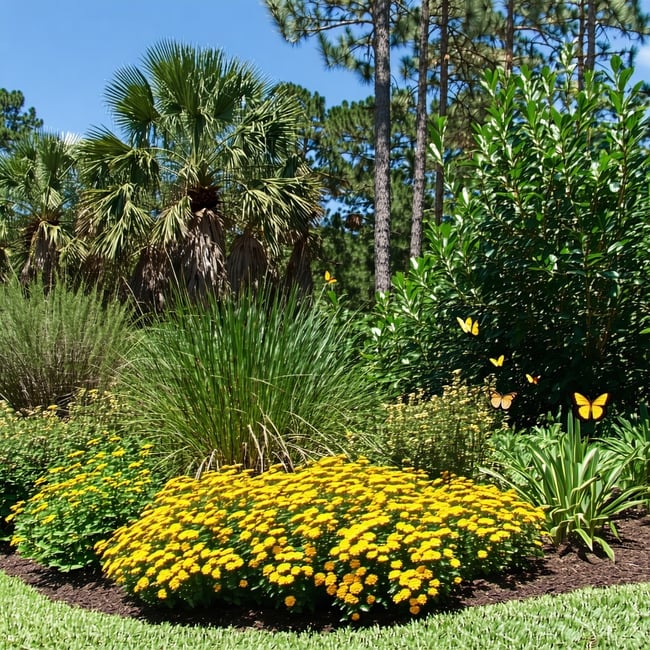
Transform your South Florida garden with native plants that thrive in the local climate while benefiting the environment.
Why Choose Native Plants for Your South Florida Garden?
Native plants are an excellent choice for South Florida gardens because they are perfectly adapted to the local climate and soil conditions. Unlike non-native species, native plants require less water, fertilizer, and pesticides, making them more sustainable and easier to maintain. Their deep roots help to prevent soil erosion and promote healthy soil structure.
By choosing native plants, you can create a beautiful and resilient garden that supports local wildlife. These plants provide food and habitat for native birds, butterflies, and beneficial insects, fostering a balanced ecosystem. Furthermore, native plants are often more resistant to local pests and diseases, reducing the need for chemical interventions.
Environmental Benefits of Planting Natives
Planting native plants in your garden offers numerous environmental benefits. One of the most significant advantages is water conservation. Native plants have evolved to thrive in the local climate, which means they require less irrigation compared to non-native species. This is particularly important in South Florida, where water resources can be limited.
Additionally, native plants help to reduce the carbon footprint of your garden. Since they are well-suited to the local environment, they require fewer chemical inputs such as fertilizers and pesticides. This not only lowers the environmental impact but also promotes healthier soil and reduces pollution runoff into nearby waterways. By supporting native plant populations, you are also helping to preserve the region's biodiversity and protect endangered species.
Top Native Plants Perfect for South Florida Gardens
When selecting native plants for your South Florida garden, consider the following species that are known to thrive in the region:
- **Tickseed (Coreopsis spp.):** This vibrant wildflower is the state wildflower of Florida. It produces bright yellow blooms that attract pollinators and add a splash of color to your garden.
- **Golden Creeper (Ernodea littoralis):** A versatile groundcover that provides excellent erosion control. It features small, yellow flowers and thrives in sandy soils.
- **Gama Grass (Tripsacum dactyloides):** This ornamental grass is known for its striking appearance and drought tolerance. It can be used as a focal point in garden designs.
- **Slash Pines (Pinus elliottii):** These native pines provide shade and habitat for wildlife. They are well-adapted to the local climate and can add height and structure to your garden.
Designing a Beautiful and Sustainable Garden
Creating a sustainable garden with native plants involves thoughtful planning and design. Start by assessing the specific conditions of your garden, such as sun exposure, soil type, and water availability. Choose a diverse mix of native plants that will thrive in these conditions and complement each other in terms of color, texture, and bloom time.
Consider incorporating layers of vegetation, including groundcovers, shrubs, and trees, to create a dynamic and multi-dimensional landscape. Group plants with similar water and light requirements together to ensure efficient resource use. Additionally, use mulch to retain soil moisture and suppress weeds, further reducing the need for chemical interventions.
Expert Tips for Maintaining Native Plant Gardens
Maintaining a native plant garden can be straightforward with the right approach. Here are some expert tips to keep your garden healthy and thriving:
- **Water Wisely:** While native plants typically require less water, it's essential to provide adequate moisture during their establishment period. Once established, many native species can rely on natural rainfall.
- **Prune Regularly:** Regular pruning helps to maintain the shape and health of your plants. Remove any dead or diseased branches to prevent the spread of pests and diseases.
- **Monitor for Pests:** Keep an eye out for any signs of pest infestations. Native plants are generally more resistant to local pests, but early detection can help manage any issues before they become severe.
- **Fertilize Sparingly:** Native plants often require less fertilizer than non-native species. Use organic fertilizers and compost to provide necessary nutrients without harming the environment.
.webp?width=200&height=55&name=Logo%20horizontal%2070-2%20(1).webp)